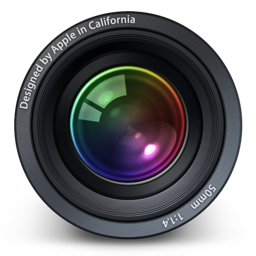Long gone are the days of the dark-room where the photographer carefully applies their skills and chemicals to develop their photo’s. Digital photography ushered in a different recording media but essentially followed the same workflow albeit in a digital format. Then came a number of photo-sharing sites such as Flickr that allowed photographers to publish/share their camera taken shots online.
 The past couple of years have seen a different dynamic both in the rise of social media as a means of sharing photos and also in the use of mobile phones as camera devices. What mobile phones lack in absolute image quality they make up for in convenience (who doesn’t have their mobile with them nowadays) and importantly the ability to directly upload/publish to social media sites such as Facebook et al. The rise of Smartphones and ‘apps’ has led to a new breed of mobile centric social media services, one of the more successful being Instagram, a simple, fun photo-sharing site which offered a simple and yet convenient means of sharing shots taken on your mobile – snap, select a filter, publish, comment. Instagram is a kind of photo-centric hybrid between FaceBook (publish, comment) and Twitter (hash-tags, followers) and has been so successful it was ‘snapped’ up by Facebook this year for $1bn.
The past couple of years have seen a different dynamic both in the rise of social media as a means of sharing photos and also in the use of mobile phones as camera devices. What mobile phones lack in absolute image quality they make up for in convenience (who doesn’t have their mobile with them nowadays) and importantly the ability to directly upload/publish to social media sites such as Facebook et al. The rise of Smartphones and ‘apps’ has led to a new breed of mobile centric social media services, one of the more successful being Instagram, a simple, fun photo-sharing site which offered a simple and yet convenient means of sharing shots taken on your mobile – snap, select a filter, publish, comment. Instagram is a kind of photo-centric hybrid between FaceBook (publish, comment) and Twitter (hash-tags, followers) and has been so successful it was ‘snapped’ up by Facebook this year for $1bn.Typical Scenarios: Photo’s taken with my real camera’s – a Canon 60D and a Panasonic LX5 – would be periodically transferred from SD card to my Mac and imported in Picasa, the free software from Google. Photo’s taken on my iPhone were sometimes uploaded my Instagram account (amountainhigh) or if I wanted to save them I’d email photo’s to my Mac for importing into Picasa. From Picasa I would upload some albums to Picasaweb for publishing to friends (though Picasaweb is slowly being morphed into Google+). Occasionally, I may upload to Facebook, though I’m not a big FB fan so tend to post very ad-hoc. If I wanted to post a photo taken on my dSLR to Instagram then I’d end up emailing it to myself, opening it on my iphone, save it onto the phone and then post to Instagram.
Confused? I certainly was – and losing control! I realised I needed a more cohesive and consistent approach to my photo management and workflow which streamlined the varying posting/publishing options.
The solution? Well it’s not ‘the’ solution but it’s my current methodology and is formed around my particular mobile and desktop hardware – namely iPhone, iPad and Mac.
The basic elements of my new digital workflow are:- Software – I’d dabbled with Adobe Photoshop and Lightroom in the past but found both overly complex and sophisticated, so persisted with Picasa for managing my photos, basic editing and publishing. Apple’s iPhoto seemed too limited but I came across Aperture, Apple’s alternative to Adobe Lightroom. This offers a good mix of photo-management (tagging, rating, albums, projects etc.) as well as a powerful set of editing capabilities and also supports integration with Photostream (see below). So I’m gradually transferring my albums into Aperture, cataloging, tagging and rating in the process.
Software – I’d dabbled with Adobe Photoshop and Lightroom in the past but found both overly complex and sophisticated, so persisted with Picasa for managing my photos, basic editing and publishing. Apple’s iPhoto seemed too limited but I came across Aperture, Apple’s alternative to Adobe Lightroom. This offers a good mix of photo-management (tagging, rating, albums, projects etc.) as well as a powerful set of editing capabilities and also supports integration with Photostream (see below). So I’m gradually transferring my albums into Aperture, cataloging, tagging and rating in the process.
iCloud Photostream – Apple’s free iCloud service allows you to sync/share data between your Apple devices. Sync’ing contacts and address books have an obvious benefit but one overlooked feature introduced last year was Photostream. Photostream stores your last 30 days photos from your iDevices in the cloud and syncs them across all your iDevices. Mac software including Aperture also natively supports Photostream so iCloud Photostream has now become the conduit for transferring my photos across devices, which has allowed Aperture to become my unified central repository for all my photo’s wherever/however I take them.Hardware – dSLR (Canon 60D), compact camera (LX5), iPhone, iPad and Mac. My iPhone 4 camera is pretty limited but I have it with me all the time. My iPad had actually proven to be handy not just for viewing photos but for importing and editing. Using an SD card adaptor I can download shots from my dSLR/LX5 onto the iPad for review, quick editing and publishing if necessary.
I tend to plug the SD card into my iPad which allows me to quickly review and share (email, FB or IG) if necessary. It also auto-adds them to my Photostream so they are then seamlessly available on my Mac for import into Aperture. You can configure Aperture to auto-import anything added to your Photostream feed, but I prefer to import only selected shots/albums – this way I avoid having embarrassing shots of drunken nights out automatically appearing on my Mac!
I can upload directly to IG or FB instantly if I wish and as photos are also automatically added to my Photostream they are also automatically made available on my iPad and my Mac, so I can selectively save ones I wish to keep into my normal folder/album structure within Aperture.
Publishing photos:
 Surprisingly I also find I am tweaking photos on my iPad before uploading to Instagram. I looked at a few photo-editors for my iPad and selected Snapseed for its versatility and ease of use. As well as the usual editing capabilities it also includes a wide range of filters with the ability to quickly change the degree of effect. I often now tend to use Snapseed in preference to the stock Instagram filters and Snapseed also allows me to open shots in IG for immediate publishing. As I’m writing this Google have announced they are buying the software company behind Snapseed, so expect to see Google+ add photo-editing features in the same way Facebook is expected to add Instagram-type features.
Surprisingly I also find I am tweaking photos on my iPad before uploading to Instagram. I looked at a few photo-editors for my iPad and selected Snapseed for its versatility and ease of use. As well as the usual editing capabilities it also includes a wide range of filters with the ability to quickly change the degree of effect. I often now tend to use Snapseed in preference to the stock Instagram filters and Snapseed also allows me to open shots in IG for immediate publishing. As I’m writing this Google have announced they are buying the software company behind Snapseed, so expect to see Google+ add photo-editing features in the same way Facebook is expected to add Instagram-type features.So the above mix currently works for me and has made for a more flexible yet more unified/streamlined process for managing my photos and subsequent publishing to a plethora of social media sites. Sharing photo’s has never been so easy, but managing your photos shouldn’t be a huge overhead – I’d rather spend more time out and about behind the camera, than fiddling around managing photos and files.
I’d be interested to hear how others have developed workflows that work for them.

Totally know what you mean. I ended up mostly using Picasa as it is by far the easiest solution and works well. I have photos all over various places. Would love a solution that does the lot. I live in hope that one day Apple will have proper iCloud photo albums which basically means that what you see in iPhoto on my Macbook is what I would see on an online version with controllable security. Still don't understand why Photo Journals aren't possible to send to iCloud on the Mac version of iPhoto like they are on the iOS version, I can only presume because of the difference is file sizes. I want to try Arperture but don't want to pay the full version then find out I don't like it, wish there was a trial version.
M'mm, online albums is one thing I'm still inbetween on. Since Picasaweb has been absorbed into Google+ I'm less inclined to use it. iOS6 apparently supports Shared Photosteams, so you can select with whom to share an album with but it's not the same as publishing online.
Not sure if it works but I did find a link to an Aperture free trial download http://aperture.en.softonic.com/mac/download